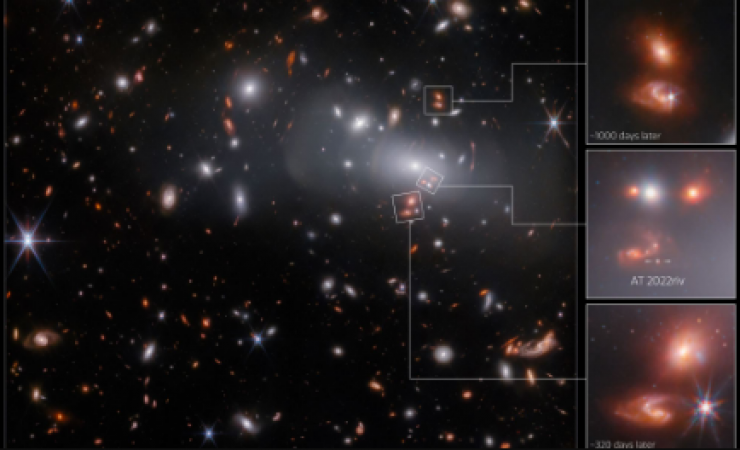
USA: NASA's James Webb Space Telescope (JWST) regularly makes fascinating discoveries. Now, it has captured a picture in which a galaxy in the RX J2129 cluster can be seen three times. This is not a bug; Rather, it is a warping of time and space caused by a spatial phenomenon.
The $10 billion JSWT Space Telescope is the largest and most powerful space telescope ever built. It has collected data on some of the most distant objects in the universe since its launch in December 2021.
The latest picture of the trio piques our curiosity. Scientists are currently working diligently to solve the mysteries of RX J2119.
Also Read: Redmi's 300W charging technology charges smartphones in less than 5 minutes
About 3.2 billion light-years from Earth, RX J2129 is found in the constellation of Aquarius. It is a Type Ia supernova. The cluster is so large and dense that it can bend space and time around itself.
Furthermore, it multiplies, magnifies and distorts the galaxies behind it, due to a phenomenon known as gravitational lensing. Most of the galaxies and stars in this group are red in color.
When large celestial objects bend spacetime, which in turn causes light to pass through or past it, the phenomenon is known as gravitational lensing (like a giant lens).
Also Read: ISRO successfully completes crucial engine testing for Chandrayaan-3
Similar functionality is provided by the RX J2129, which causes background objects to display strange distortion when an image is attempted to be taken. This explains why the triplets are happening.
Astronomers benefit from Type Ia supernovae because they appear equally bright at similar distances. They can be used as "standard candles" to measure astronomical distances because they appear dimmer the farther they are from Earth.
Scientists are trying to determine the mass of the galaxy cluster and the "recipe" of its gravitational lensing by measuring the brightness of the Type Ia in RX J2129.
The galaxy cluster RX J2129 was photographed using the near-infrared camera on JWST. Meanwhile, the Type 1a supernova was studied spectroscopically by the Near Infrared Spectrograph (NIRSpec). It will now be compared by scientists to other Type Ia supernovae in the nearby universe.